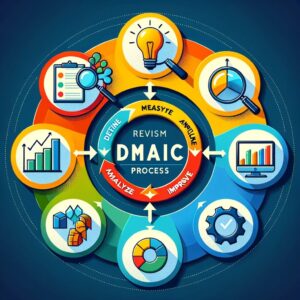Experience Curve

The Experience Curve is a concept in business strategy that suggests the more experience a firm gains in producing a particular product or service, the lower its costs will become. This idea is grounded in the observation that operational efficiency improves over time as organizations learn and implement ways to reduce production costs and improve productivity. The Experience Curve can be considered a broader application of the learning curve, which primarily focuses on labor efficiency improvements.
Key Elements of the Experience Curve:
- Cost Reduction: As a company produces more, it learns how to do so more efficiently, leading to a decrease in the per-unit cost of production. This reduction includes both direct costs (like materials and labor) and indirect costs (such as overhead).
- Volume: The Experience Curve effect is strongly influenced by the volume of production. Higher volumes lead to faster learning and cost reduction.
- Technology and Innovation: Technological advancements and innovations can steepen the Experience Curve, allowing for more rapid cost reductions as production processes improve.
- Process Improvements: Continuous improvement methodologies, such as Lean Management, are central to accelerating the Experience Curve effect by systematically reducing waste and improving workflow efficiency.
Strategic Implications:
Organizations can leverage the Experience Curve to gain competitive advantages by:
- Pricing Strategies: Using knowledge of cost reductions to set prices that competitors may find difficult to match.
- Investment Decisions: Prioritizing investments in areas where the Experience Curve can be most beneficial.
- Market Expansion: Expanding market share to accelerate down the Experience Curve, reducing costs faster than competitors.
Limitations:
- Diminishing Returns: The rate of cost reduction can decrease as the organization matures and the easy gains are exhausted.
- Market Changes: Shifts in market demand, technology, or competitive landscape can disrupt the Experience Curve’s trajectory.
- Focus on Cost Reduction: An exclusive focus on cost reduction can sometimes lead to a neglect of other important factors like quality and innovation.
Similar Tools and Methodologies:
- Lean Management: Focuses on waste reduction and value maximization across all areas of a business to improve efficiencies and reduce costs.
- Six Sigma: Aims at improving the quality of process outputs by identifying and removing the causes of defects and minimizing variability in manufacturing and business processes.
- Total Quality Management (TQM): An organizational approach that seeks continuous improvement in processes, products, and services, with the goal of achieving customer satisfaction and operational efficiency.
- Benchmarking: Involves comparing business processes and performance metrics to industry bests and best practices from other companies, often to understand how to reduce costs or improve in specific areas.
Understanding the Experience Curve and how it relates to these other methodologies can help organizations strategically manage their growth, operational efficiency, and competitive positioning.



